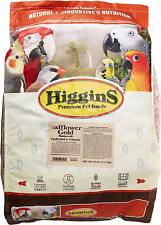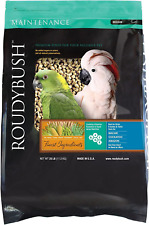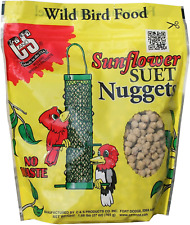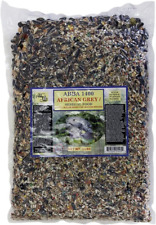Personal Protection Training for Dogs – the Sport for Killers?

After one recent phone call, I decided to write a bit about the Schutzhund and Personal Protection training. (Shortened to Sch and PP). The caller wanted to know: 1) do I teach attack training (no) and (2) what was the baddest dog he could get to teach to attack. Though the caller scared me with what he wanted to do, his call was no shock. I wish to dispel some myths regarding Sch and PP work. Before I continue, I wish to thank Mr. Marcelo Villanueva who is a training assistant and decoy (the guy in the padded suit).
He has been training with the Schutzhund Club of Canada, a recognized organization within the Canadian Schutzhund Community. Also, thank you to Lia Maher who belongs to an Australian dog club that counts Schutzhund as one of its many activities offered. I was able to get views from both the experienced and the novice. This article is being written for the general public to help clarify these often misunderstood dog-related activities.
There are differences between Sch and PP. To break it down simply: Sch is a sport that includes bite work, tracking and obedience/agility. PP is a form of training that puts the dog and handler team in real world situations. Sch was developed in Germany to test the German Shepherd Dog’s working ability and temperament for future breeding. Not all Sch dogs will make good PP dogs and vice versa. Why? Well, not all PP dogs can handle the physical requirements of Sch and some Sch dogs cannot transition to the real world scenarios of PP.
In theory, any dog can do either activity. For example, in Sch, most people think of German Shepherd Dogs, Belgian, Malinois, Rottweiler, Dobermans and a few others. But other breeds such as the Bouvier des Flandres, American Pit Bull Terrier and American Bulldog can excel in this sport. Crossbred dogs can do quite well and there have even been the odd Golden Retriever, Border Collie and Australian Cattle Dog in competition. But there are limitations.
The dog must have a high level of endurance so the Bulldog (English type) would be a very poor candidate here. Also the dog must be able to pass a strict temperament test in which the dog should NOT show any aggression to new environments and stimuli. So, the dog that shows fear or apprehension at new things, or the dog that is overly aggressive and cannot be controlled in situations are not good candidates either.
What temperament is best for these activities? Both Mr. Villanueva and Ms Maher agree that a STABLE, confident dog is vital for Sch and PP. The dog should show a strong play and prey drive, a willingness to explore, comfort in new situations and a willingness to work. A dog that is aggressive by nature, either through fear or excessive dominance, is not a good choice. Therefore, the concept many have that a dog needs to be viscous, "bad" or a natural killer in order to do Sch or PP is wrong.
Proper training of either a Sch or PP dog is VITAL. These are not activities to go into half-heartedly. In both activities, you are teaching a dog that it may have to bite at times. But the dog also has to be willing to release that bite when told. A high level of obedience and socializing is essential in both activities. It was recommended by Mr.Villaneuva that the protection work (the biting end) be practiced at least 2 – 3 times a week. Obedience and tracking should be drilled every day. Ms Maher gave great emphasis on the need to train control. An out of control dog is a danger as is the one who bites without reason and refuses to release or stop a charge.
Should you consider either activity? Look at yourself. Are you are passionate about either activity? Do you have the right dog (physically and mentally)? Do you have the ability to commit extreme time into proper training? Are you calm, rational, and do not have a quick temper? Then consider investigating these activities further if they strike your fancy for the right reasons.
However, if you think this is a cool thing to do or want to have the "baddest" dog on the block, forget it. If you want to turn your already "bad" dog into a weapon, again, forget it. If you cannot or will not devote the energies to properly train and maintain the dog, forget it. These are not activities for the macho image-seekers or those who cannot, for whatever reason, dedicate the awesome amount of time and training. Also, you must be willing to help change public perception of these activities and endure criticism for what you are doing.
When asked if the average dog owner should consider Sch or PP work, both responded "No." The average dog owner is often not prepared mentally, physically or has the right dog for these activities. The average dog owner is often lacking in even rudimentary knowledge of dog behavior and drives. Most dog owners confuse these activities with attack training.
According to Mr. Villanueva, attack training implies aggression without provocation (think the stereotypical junk yard dog). Sch and PP are defensive techniques in response to an attack. However, if the average dog owner is willing to educate him or herself, understand the drives of dogs and choose the best dog for the activities AND is willing to devote the years of training, then yes, you may wish to consider these activities. But then, you would have raised yourself above average.
Schutzhund and Personal Protection are not sports of killers. They are the activities of highly trained individuals and their dogs. They are the activities for the stable-minded, driven and even fun loving. The dogs are doing a job, participating in a sport. However, these dogs may be more than the average dog owner is able to take on. The dogs are not bad, but dogs with a dominant nature and a strong work drive need owners who are experienced with very confident dogs.
The thought that only killer dogs are suited for these activities is wrong and can be extremely dangerous. Problems arise when people want to make the "baddest dog on the block" or are looking for the most aggressive dog to teach to attack. Or, when people enter the activities half-heartedly and poorly train the dogs. This is when we end up with dangerous dogs.
Those who are dedicated to the sports of Schutzhund and Personal Protection are just another branch on the tree of dedicated dog lovers who enjoy the bond training creates and the feeling of working closely with their dogs.













